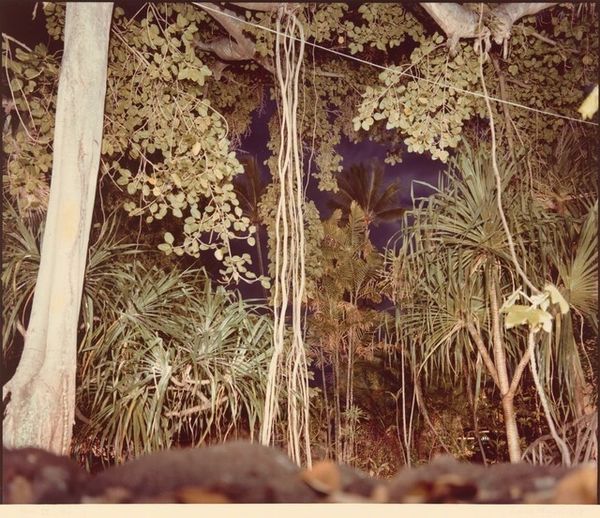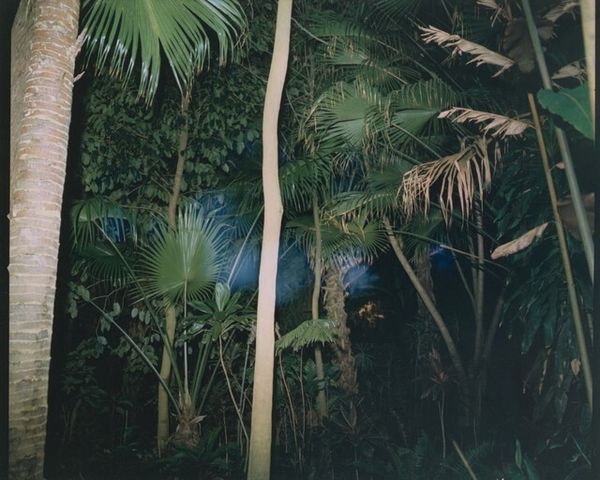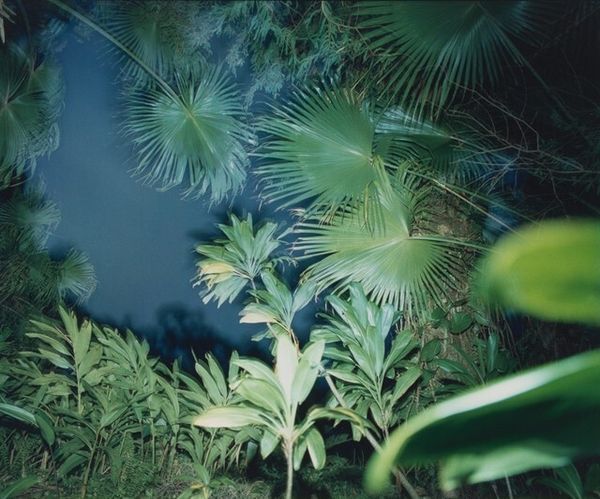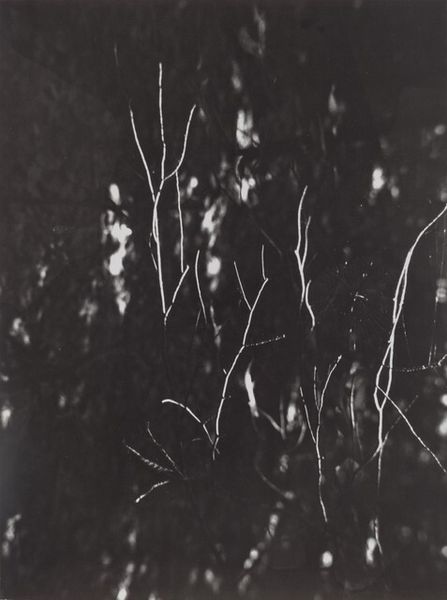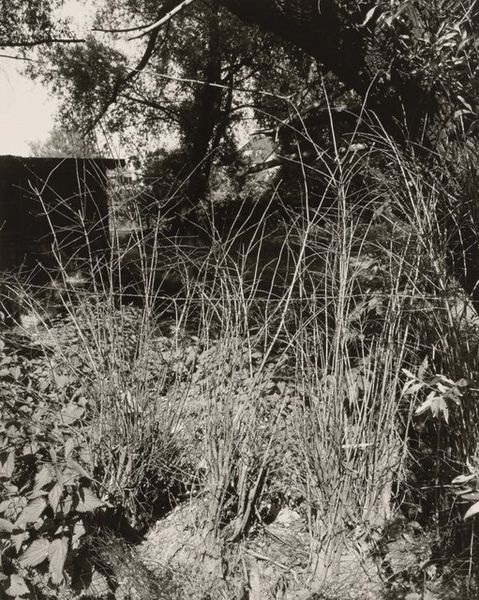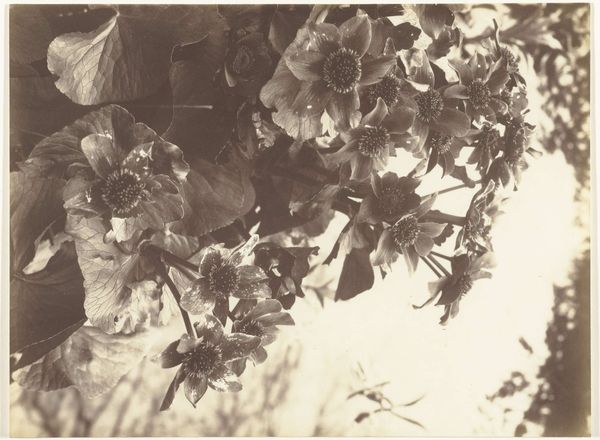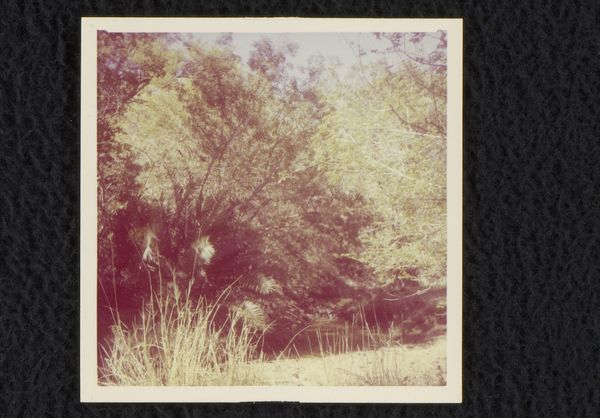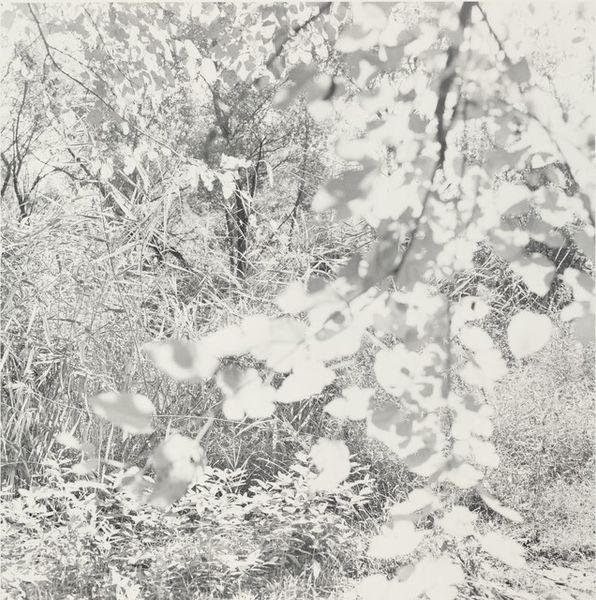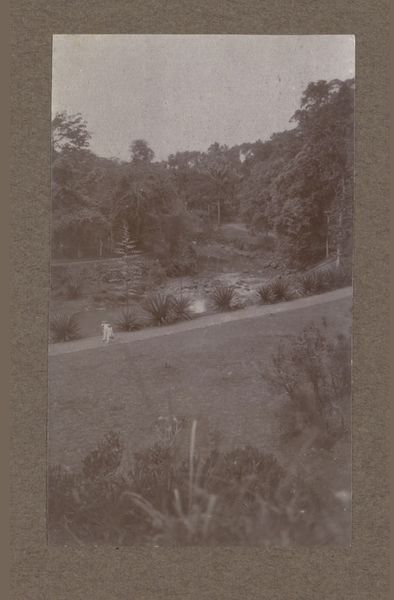
c-print, photography
#
landscape
#
c-print
#
photography
#
realism
Dimensions: image: 70 × 84.5 cm (27 9/16 × 33 1/4 in.) sheet: 75.5 × 100.7 cm (29 3/4 × 39 5/8 in.) mount: 75.5 × 100.7 cm (29 3/4 × 39 5/8 in.)
Copyright: National Gallery of Art: CC0 1.0
Curator: This is Richard Misrach's "Hawaii XII," a C-print photograph from 1978. Editor: It has a stillness...like you've stepped away from a humid day and are suddenly under the dense cover of plant life. It feels like a very specific place. Curator: The specificity is interesting, especially when you consider Misrach's wider "desert cantos." How does this lush image connect to the rest of his work? It disrupts the narrative you might expect from him. Perhaps its about labor and the commodification of "paradise." Hawaii, in 1978, was at a crossroads with increased tourism shaping the island economy. Editor: Absolutely. I see this in terms of place-making and the marketing of paradise through imagery, perhaps a social commentary about who benefits from its consumption. The plants themselves are fascinating from a material standpoint – I see rope-like roots, heavy leaves, what looks like sharp spiky palms. The variety of textures, how they interact and fill up nearly all of the composition – it's really all about material exploration here. Curator: Consider too how C-prints—chromogenic color prints—became widely accessible at the time. This access changed the field for photographers who sought wider audiences outside galleries, bringing both an immediate accessibility but, potentially, flattening the field as well. How does mass-produced art inform a larger public consciousness of the island? Editor: I see it also as evidence of his photographic craftsmanship—balancing light in what looks like an almost impossible dark interior. The light and shadows reveal something of the island’s story. Curator: I'm not entirely convinced he's crafting an Eden narrative. There's something melancholy here. It's not the idealized vision that was and is so easily consumed. Editor: And yet, it presents Hawaii through accessible imagery. Curator: It gives a layer to our understanding about the island’s social, economic and artistic identity as the time. Editor: Looking closer has opened the picture for me; now I think I see that the image-making informs a more global network of artistic exchange and commentary.
Comments
No comments
Be the first to comment and join the conversation on the ultimate creative platform.

